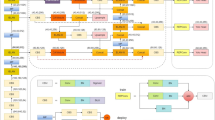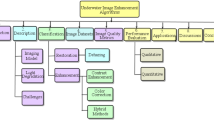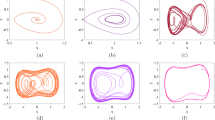Abstract
To classify sea targets of underwater and surface groups. A novel hybrid classification algorithm based on sonar, automatic identification system (AIS) and radar is proposed in this paper. The proposed method includes four parts. The data preprocessing, the multi-target data association, the multi-sensor multi-target correlation, and the underwater/surface probability distribution fusion. Firstly, the measurement data of multiple sensors are unified in time and space through space-time registration. Secondly, the measurement data of each sensor are separated into different target sets by Mahalanobis distance discriminant method. And each target is modeled by grey prediction GM (1,1) model subsequently, and the noise of data are filtered by Kalman filter (KF). Thirdly, it preliminarily determines the type of targets by Hungarian algorithm. Finally, the D–S evidence theory based on the Angle cosine and Lance distance (ALDS) is used to further determines the target type. The proposed methods can be applied when there is inconsistent evidence. Simulation results illustrate that the proposed algorithm is effective in decision support for sea target classification.








Similar content being viewed by others
Abbreviations
- \({X}_{k}\) :
-
State vector at time k
- \(Z_{k+1}^{i}\) :
-
Measurement vector of sensor i at time \(k+1\)
- \({F}_{j}\) :
-
Transition matrix of motion model j
- \(H_{k+1}^{i}\) :
-
Measurement matrix of sensor i at time \(k+1\)
- \(v_{k+1}^{i}\) :
-
Measurement noise of sensor i at time \(k+1\)
- \(x_k\) :
-
Distance in the longitude direction at time k(km)
- \(y_k\) :
-
Distance in the latitude direction at time k(km)
- \(c_k\) :
-
Course angle at time k (\(\circ\))
- \(v_x\) :
-
Velocity in the longitude direction (kn)
- \(v_y\) :
-
Velocity in the latitude direction (kn)
- w :
-
Turning rate in a two-dimensional plane \((\circ /s)\)
- Lat :
-
Latitude (\(\circ\))
- Lon :
-
Longitude (\(\circ\))
- Lat0:
-
Initial latitude (\(\circ\))
- Lon0:
-
Initial longitude (\(\circ\))
- \(D_x\) :
-
Distance that the target moves in the longitude (km)
- \(D_y\) :
-
Distance that the target moves in the latitude (km)
- \(d_{k+1}(rj)\) :
-
Mahalanobis distance
- G(j):
-
Track of the target j
- \(Z_k+1(r)\) :
-
Measurement vector of rth
- \(\lambda _T\) :
-
Mahalanobis distance threshold
- m :
-
Total number of samples
- P :
-
Error matrix
- Q :
-
Process noise covariance matrix
- R :
-
Measurement noise covariance matrix
- H :
-
Measurement matrix
- L :
-
Correlation cost matrix
- M :
-
Match matrix
- \(n_{12}\) :
-
Correlation coefficient
- D :
-
Number of sensors that detected the target
- N :
-
Total number of sensors
- \(S_ij\) :
-
Angle between evidence i and evidence j
- fac :
-
Correction coefficient
- \(T_ij\) :
-
Lance distance between evidence i and evidence j
- \(m(\theta )\) :
-
Reliability function of uncertainty
- C :
-
Degree of conflict
- \(\alpha\) :
-
Missing detection rate
- \(\beta\) :
-
Clutter rate
References
Zhao, J., Xue, R., Dong, Z.N., Tang, D.Y., Wei, W.H.: Evaluating the reliability of sources of evidence with a two-perspective approach in classification problems based on evidence theory. Inf. Sci. 507, 313–338 (2020)
Mardani, A., Jusoh, A., Zavadskas, E.K.: Fuzzy multiple criteria decision-making techniques and applications—two decades review from 1994 to 2014. Expert Syst. Appl. 42(8), 4126–4148 (2015)
Jiang, W., Wei, B.: Intuitionistic fuzzy evidential power aggregation operator and its application in multiple criteria decision-making. Int. J. Syst. Sci. 49(3), 582–594 (2017)
Shaheen, T., Mian, B., Shabir, M., Feng, F.: A Novel Approach to Decision Analysis Using Dominance-Based Soft Rough Sets. Int. J. Fuzzy Syst. 21(3), 954–962 (2019)
Wei, W., Liang, J.Y.: Information fusion in rough set theory: an overview. Inf. Fusion 48, 107–118 (2019)
Fu, C., Xu, D.-L.: Determining attribute weights to improve solution reliability and its application to selecting leading industries. Ann. Oper. Res. 245(1–2), 401–426 (2016)
Yager, R.R.: On the aggregation of prioritized belief structures. IEEE Trans. Syst. Man Cybern. Part A 26(6), 708–717 (2002)
Xiao, F., Bowen, Q.: A weighted combination method for conflicting evidence in multi-sensor data fusion. Sensors 18(5), 1487 (2018)
Smets, P.: The combination of evidence in the transferable belief model. IEEE Trans. Pattern Anal. Mach. Intell. 12(5), 0–458 (1990)
Murphy, C.K.: Combining belief functions when evidence conflicts. Decis. Support Syst. 29(1), 1–9 (2000)
Ye, F., Jie, C., Yuan, T.: A robust DS combination method based on evidence correction and conflict redistribution. J. Sens. 1–12 (2018)
Lin, Y., Wang, C., Ma, C.G., Dou, Z., Ma, X.F.: A new combination method for multisensor conflict information. J. Supercomput. 72(7), 2874–2890 (2016)
Han, D., Deng, Y., Liu, Q.: Combining belief functions based on distance of evidence (vol 38, pg 489, 2004). Decis. Support Syst. 38(3), 489–493 (2005)
Schubert, J.: Conflict management in Dempster-Shafer theory using the degree of falsity. Int. J. Approx. Reason. 52(3), 449–460 (2011)
Zhang, Z.J., Liu, T.H., Zhang, W.Y.: Novel paradigm for constructing masses in Dempster-Shafer evidence theory for wireless sensor network’s multisource data fusion. Sensors 14(4), 7049–7065 (2014)
Xiangpeng, S., et al.: Improved D-S evidence theory algorithm for solving conflict evidence combination problem. J. Hubei Minzu Univ. ( Nat. Sci. Edn.) 39(02), 180–186 (2021)
Ning, H., Wei, H., Sha, H., Wang, B.: Space-time registration for physical-cyber world mapping in internet of things. In: 2012 IEEE 12th International Conference on Computer and Information Technology (CIT) (2012)
Ye, J.M., Xu, Z.S., Gou, X.J.: A new perspective of bayes formula based on D-S theory in interval intuitionistic fuzzy environment and its applications. Int. J. Fuzzy Syst. 21(4), 1196–1213 (2019)
Li, S., Guokai, L., Xianghong, T., Jianguang, L., Jianjun, H.: An ensemble deep convolutional neural network model with improved D-S evidence fusion for bearing fault diagnosis. Sensors 17(8), 1729 (2017)
Wen, C., Wang, Y., Xu, X.: Fuzzy information fusion algorithm of fault diagnosis based on similarity measure of evidence. In: Advances in Neural Networks—ISNN 2008, 5th International Symposium on Neural Networks, ISNN 2008, Beijing, China, September 24–28, 2008, Proceedings, Part II (2008)
Acknowledgements
This project is supported by the National Natural Science Foundation of China (62033009, U1706224) and the Creative Activity Plan for Science and Technology Commission of Shanghai (206510712300).
Author information
Authors and Affiliations
Corresponding author
Rights and permissions
About this article
Cite this article
Zhu, D., Zhang, Z. & Yan, M. A Novel Hybrid Algorithm of Sea Object Classification Based on Multi-sensor and Multi-level Track. Int. J. Fuzzy Syst. 24, 2705–2718 (2022). https://doi.org/10.1007/s40815-022-01252-9
Received:
Revised:
Accepted:
Published:
Issue Date:
DOI: https://doi.org/10.1007/s40815-022-01252-9




